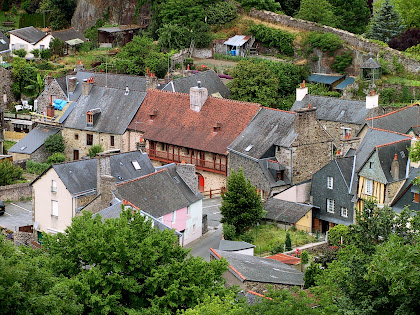Imagine you were spending some time touring around in the Perche region and towns including Mortagne, Bellême, Nogent-le-Rotrou, Sées and Alençon. If you decided you wanted to do a day trip, one good destination would be the town of Fougères (pop. 20,000) on the eastern edge of Brittany. It takes two hours or so to get there, but the drive is through beautiful green countryside and there are stops like the hilltop village Domfront along the way that would make a good place to have lunch. Fougères itself is the site of one of Europe's most imposing fortified châteaux. The château complex occupies five acres of land and included 13 towers. It was built between the 12th and 15th centuries.
 The first château de Fougères was destroyed in 1166 when Henri II Plantagenêt laid siege to it and left it in ruins. It was re-built soon after, however, starting in 1176. It was given to Diane de Poitiers by the French king Henri II in 1547. And the novelist Honoré de Balzac spent time there in the 19th century. Fougères is only about 45 minutes by car from the Mont Saint-Michel.
The first château de Fougères was destroyed in 1166 when Henri II Plantagenêt laid siege to it and left it in ruins. It was re-built soon after, however, starting in 1176. It was given to Diane de Poitiers by the French king Henri II in 1547. And the novelist Honoré de Balzac spent time there in the 19th century. Fougères is only about 45 minutes by car from the Mont Saint-Michel.

















































